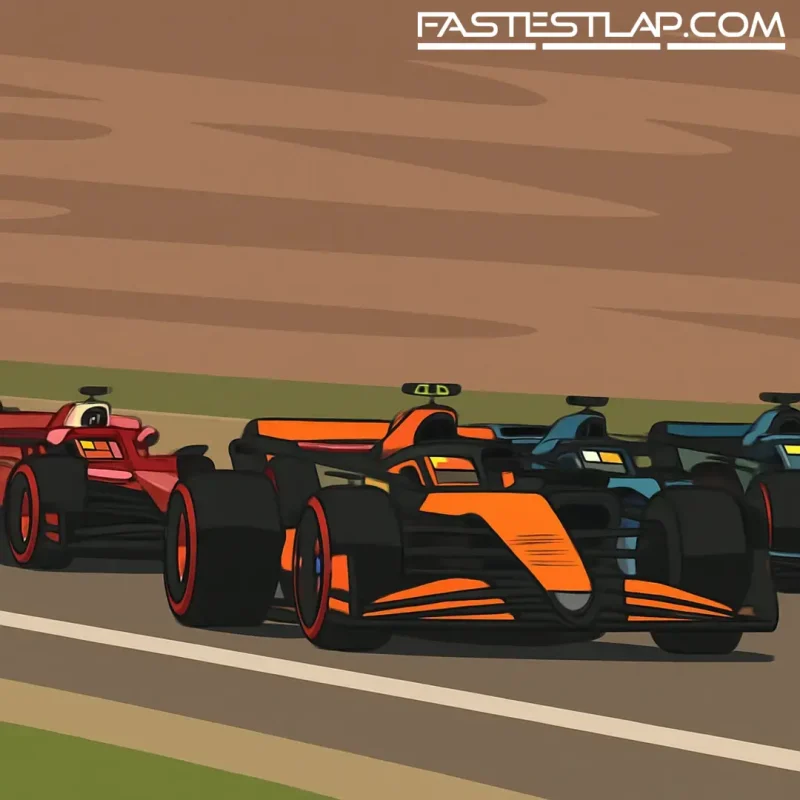F1 parks the V8 talk: 2026 hybrids to run full cycle, next change pushed to 2031 discussions
If you’d been hoping the paddock’s flirtation with a V8 revival might snowball into a rule change before decade’s end, park it. The much-trailed London summit of power unit manufacturers, set for next week to chew over a naturally aspirated future on sustainable fuel, has been pulled at the eleventh hour — and with it, any realistic prospect of a pre‑2031 switch.
As PlanetF1 first detailed, the meeting was due to frame a decision on introducing a 2.4‑litre V8 as early as 2029, ditching the complexity of the 1.6‑litre V6 hybrid layout that comes online next season. Instead, the call has gone out: see the 2026 engine rules through exactly as planned. That means the new V6 hybrids will run a full five‑year term.
In plain language: the V8/V10 nostalgia tour is off for now, and the incoming power units get the runway they were promised.
It’s a pragmatic move with political undertones. The FIA has been enthusiastic about a lower-cost, louder, simpler engine — President Mohammed Ben Sulayem even called a V8 “the right way to go” in July, arguing that complexity and cost have spiraled. But manufacturer reality bites. Those pushing the road‑relevant, high‑electrification message weren’t keen on ripping up the timeline. Honda and Audi, in particular, have been aligned to F1’s bigger electrical split and sustainability pitch — and changing course midstream, before the 2026 regs have even turned a wheel, was always going to be a hard sell.
So, what’s coming in 2026 will stay the course. The MGU‑H disappears, the electrical output climbs to a hefty 350 kW, and the overall balance nudges toward a near 50/50 split between the internal combustion engine and the hybrid system. Active aero arrives too, with drivers toggling between low-drag “X‑mode” and high-downforce “Z‑mode” to keep lap times in the right postal code despite the reduced ICE contribution.
There was genuine momentum behind the V8 concept, helped by the sport’s commitment to 100% sustainable fuels — the single biggest enabler of a simpler, naturally aspirated engine without the old fossil-efficiency handcuffs. Throw in the allure of a lighter, cheaper, smaller package and, yes, that old‑school sound, and you can see why the idea kept bouncing back into the room.
Ben Sulayem laid it out at Silverstone, not mincing words on cost, weight, and spectacle: a straightforward V8, he argued, would slash R&D, trim 90–100 kilograms, and hand back some freedom to chassis designers and safety engineers alike. “The worst thing to a driver is the mass weight,” he said. “The car will be smaller and it will be better — and then the sound, you will have it.”
But right now, budgets and road‑car strategies are talking louder than exhausts. Committing to the 2026–2030 cycle gives manufacturers a chance to amortize the heavy R&D they’ve already piled in, avoids a second expensive pivot, and buys time for a calmer reset discussion based on what the 2026 package actually delivers on track. That conversation will now center on 2031, not 2029 or 2030.
There’s also the aerodynamic compromise in play. To maintain performance targets under the new split, chassis and aero rules have been carefully massaged. A sudden engine detour would have triggered knock-on changes elsewhere — all of it expensive, all of it risky.
For fans pining for the bark and bite of a V8 or the spine‑tingle of a V10, the door isn’t locked — it’s just been pushed further down the hallway. The sustainable-fuel era still makes a simpler engine viable. And the appetite for cheaper, lighter, noisier F1 hasn’t vanished within parts of the paddock.
But the immediate future is set. The 2026 power units — more electric, no MGU‑H, active aero in tow — will define the next half‑decade. The V8 dream will have to wait its turn. In this championship, timing is everything.




